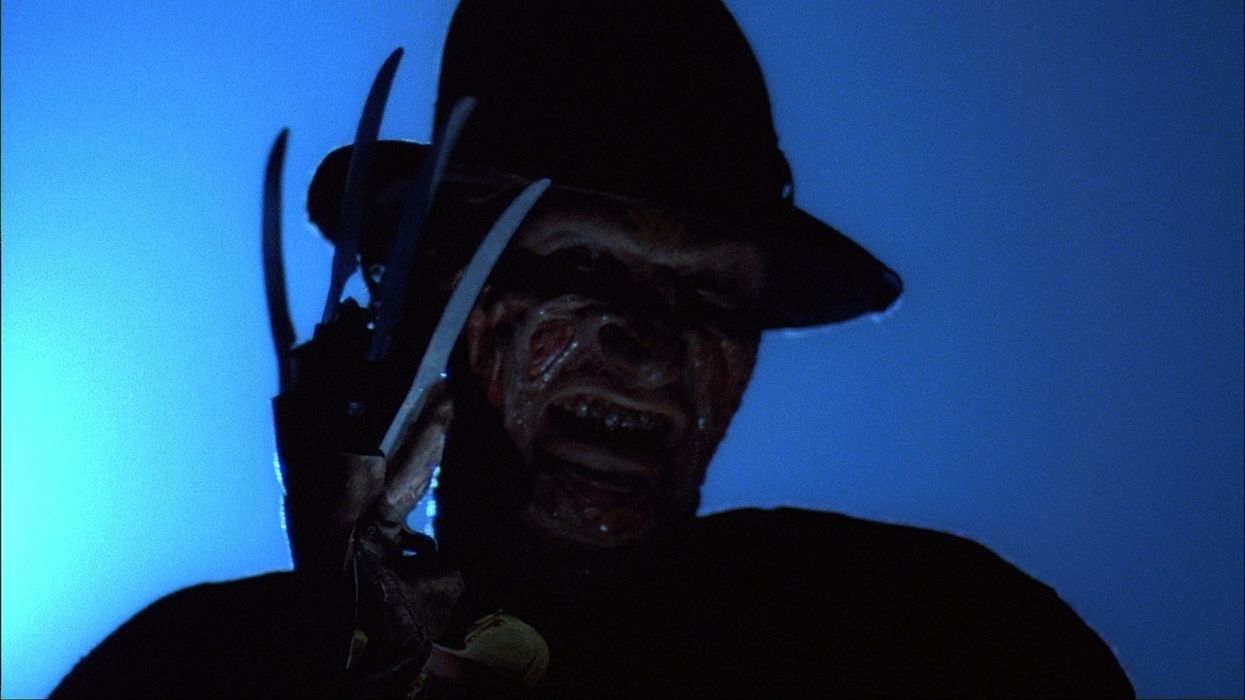We already know what makes a horror film scary—a ghoulish face, blood and guts, a loud sound—but how do we build up the tension that precedes those scares? Rob Ager of Collative Learning explores that concept in the video below, explaining how director Wes Craven used sound and visual motifs in A Nightmare on Elm Street to subtly communicate "pain infliction" when Freddy sliced and diced his way through his sleepy teenage victims.
According to Ager, Craven used several elements to "tap into the fear of physical pain," like bold white imagery, striped motifs that mimicked Freddy's sweater, the color red, and materials that served as metaphors for flesh.
One especially interesting element, though, was Craven's use of high/low-pitched noises in the soundtrack. This is a technique Alfred Hitchcock famously used in Psycho during the shower scene in which Norman, dressed as his mother, stabs Marion to death. We never once see his knife puncture her skin, but what we lack in visual confirmation of pain, composer Bernard Herrmann makes up for in convincing audio. Each shriek from the violins becomes a stab, one after another, resulting in a literal blood bath for the film's protagonist.
Herrmann's biographer Steven Smith describes this part of the score to NPR as having "percussive effects", which, if you think about it, a stabbing is quite the percussive event.
It's cold, it's chilly, and he uses the strings also for percussive effects, since we don't have the traditional things like timpani and all the sort of devices that film composers use to scare or startle people. He created percussive effects in the strings.
There are a lot of ways to build up the tension in your horror film; there are also a lot of motifs and themes you can play with in order to get your audience to feel (or at least sense) the pain that your ill-fated characters are feeling. Craven was a true master of the genre, so you might want to take notes the next time you watch one of his films.
Source: Collative Learning












